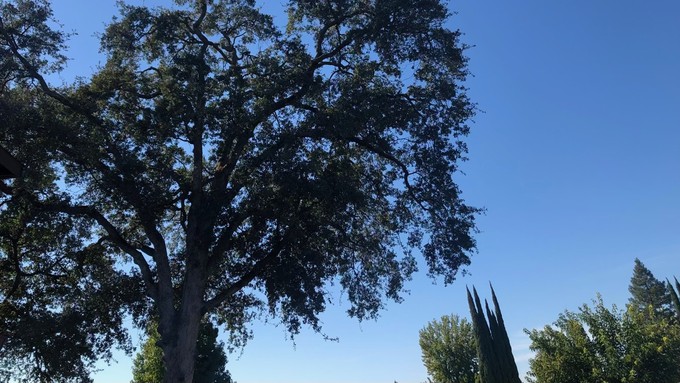
Placer master gardeners present free in-person session

Trees in neighborhoods and other urban areas take many forms and require different levels of care. The Urban Forestry workshop on Saturday focuses on the best practices for growing urban trees. Kathy Morrison
Collectively, humans get urban trees all wrong. They plant them too close to houses, or in tiny strips next to concrete, or tied forever to nursery stakes. They want tall trees instantly, for shade, not realizing that fast-growing trees also can be brittle. They complain about leaf litter. Or bird droppings from the local wildlife that nest there. Or that an older tree is now “blocking the view” and cut it down. Sheesh.
Among other benefits, trees naturally capture and lock up carbon dioxide through photosynthesis, but they're also victims of climate change-caused heat, wildfires and drought. Recent amendments to California’s Urban Forestry Act (which became law in 1978) aim to increase the tree canopy in the state. California also recently was granted nearly $102 million by the federal government to combat extreme heat and climate change, plant and maintain trees, and create urban green spaces.
It's no wonder the UCCE master gardeners of Placer County have dedicated this month’s free public workshop to trees. Their Urban Forestry workshop is scheduled for 10:30 to 11:30 a.m. this Saturday, Oct. 14, at the Loomis Library, 6050 Library Drive, Loomis.
“We will explore how gardeners can make this goal (of increasing the tree canopy) a reality," the master gardeners note. "Tree cover is vital in the built environment for shade, habitat, air quality and general well-being. We can have trees and eat our cake too!”
For other workshops and events on the Placer master gardeners' calendar this fall, go to https://pcmg.ucanr.edu/
The former lawn at Loomis Library, incidentally, is soon to be the site of the Placer master gardeners' demonstration garden. Work is already in progress -- check it out when attending the workshop.
Comments
0 comments have been posted.Sacramento Digs Gardening to your inbox.
Sites We Like
Garden Checklist for week of April 21
This week there’s plenty to keep gardeners busy. With no rain in the immediate forecast, remember to irrigate any new transplants.
* Weed, weed, weed! Get them before they flower and go to seed.
* April is the last chance to plant citrus trees such as dwarf orange, lemon and kumquat. These trees also look good in landscaping and provide fresh fruit in winter.
* Smell orange blossoms? Feed citrus trees with a low dose of balanced fertilizer (such as 10-10-10) during bloom to help set fruit. Keep an eye out for ants.
* Apply slow-release fertilizer to the lawn.
* Thoroughly clean debris from the bottom of outdoor ponds or fountains.
* Spring brings a flush of rapid growth, and that means your garden is really hungry. Feed shrubs and trees with a slow-release fertilizer. Or mulch with a 1-inch layer of compost.
* Azaleas and camellias looking a little yellow? If leaves are turning yellow between the veins, give them a boost with chelated iron.
* Trim dead flowers but not leaves from spring-flowering bulbs such as daffodils and tulips. Those leaves gather energy to create next year's flowers. Also, give the bulbs a fertilizer boost after bloom.
* Pinch chrysanthemums back to 12 inches for fall flowers. Cut old stems to the ground.
* Mulch around plants to conserve moisture and control weeds.
* From seed, plant beans, beets, cantaloupes, carrots, corn, cucumbers, melons, radishes and squash.
* Plant onion sets.
* In the flower garden, plant seeds for asters, cosmos, celosia, marigolds, salvia, sunflowers and zinnias.
* Transplant petunias, zinnias, geraniums and other summer bloomers.
* Plant perennials and dahlia tubers for summer bloom.
* Mid to late April is about the last chance to plant summer bulbs, such as gladiolus and tuberous begonias.
* Transplant lettuce seedlings. Choose varieties that mature quickly such as loose leaf.